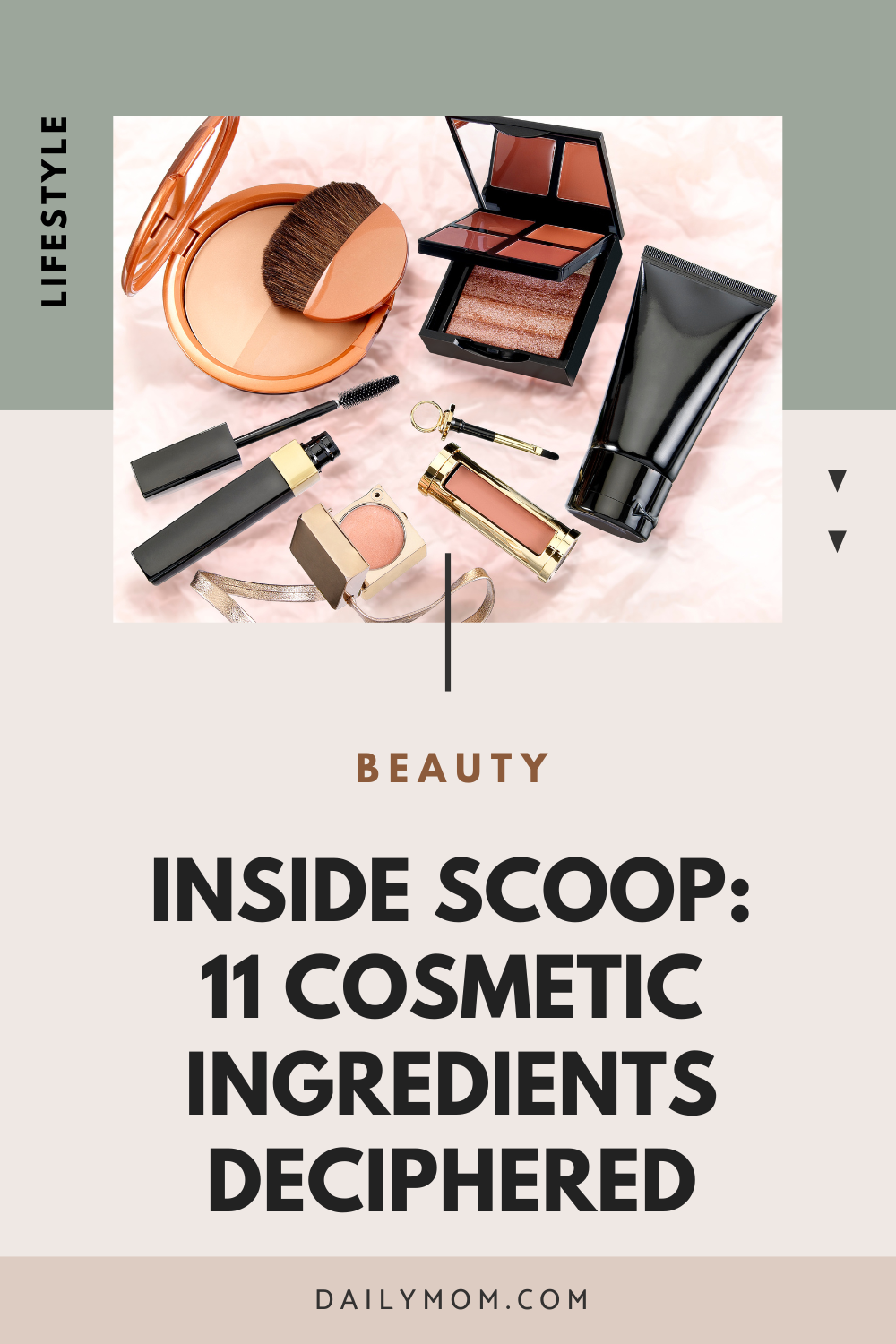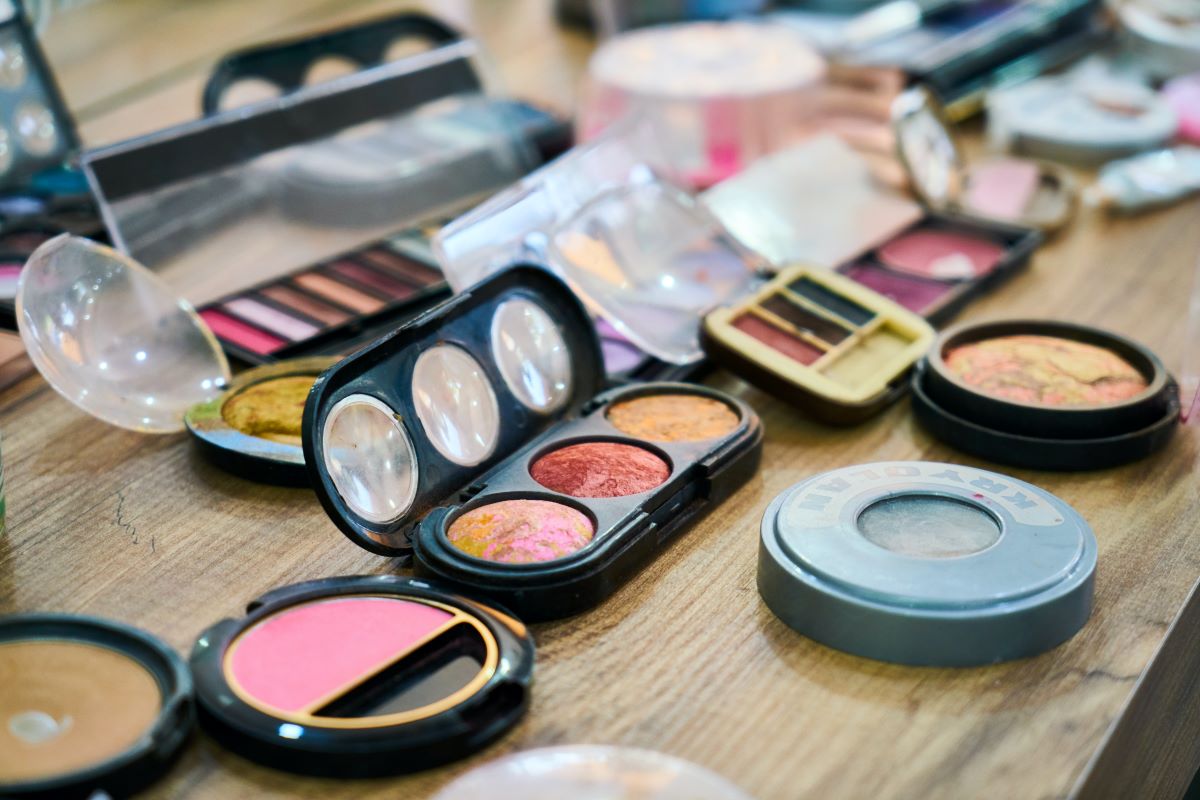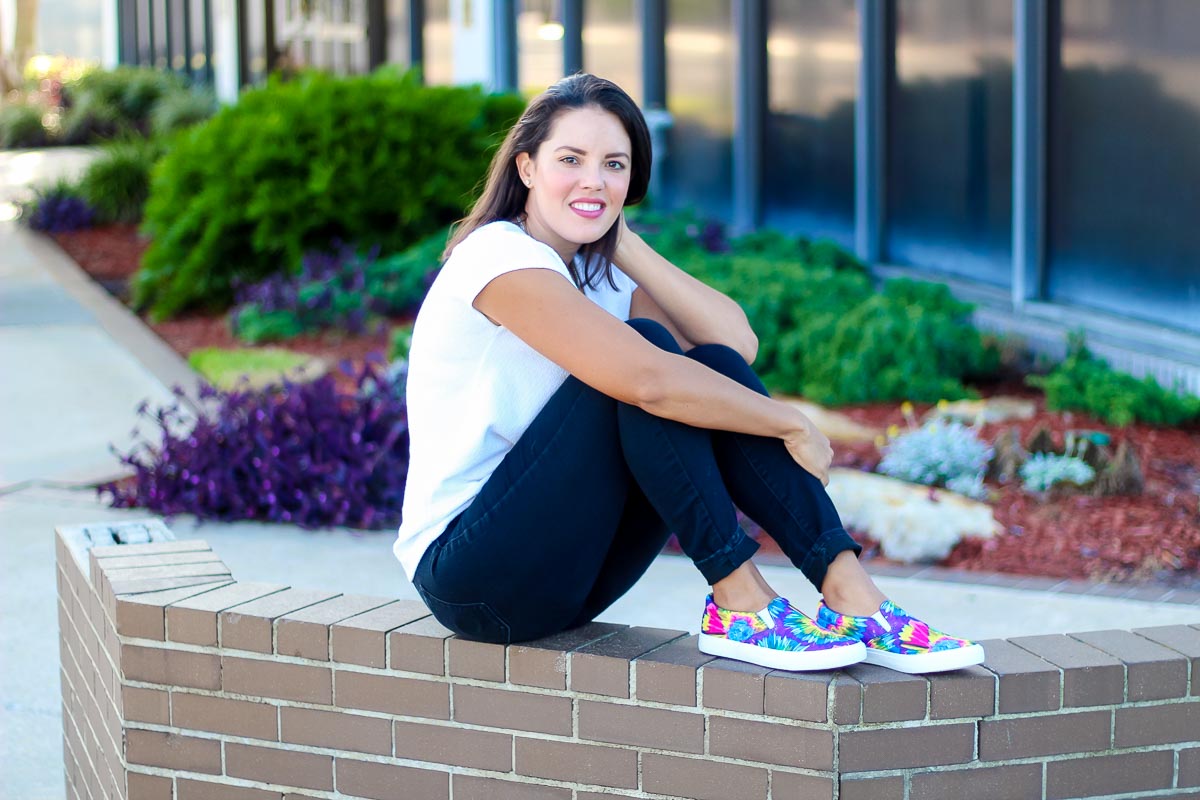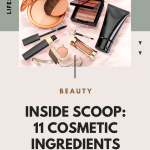The average woman uses 12 different beauty products a day between cleansers, conditioners, fragrances, lotions, nail polish, etc. According to the latest stats, cosmetics sales grow 11.6% each year. So doesn’t it make sense to know a bit more about what you’re putting on your body? Not to worry, Daily Mom is here to take the mystery out and help decipher the 11 most common cosmetic ingredients found in beauty products.

Whether you’re looking for an FDA approved cosmetic ingredients list, or just want to know what beauty products are created with, being aware of the ingredients that are in all cosmetics, from makeup to skincare products, is just being a responsible consumer. They can contain hazardous chemicals that could be damaging to both skin and overall health. Some common ingredients include fragrances, parabens, and phthalates, which have been linked to a range of health issues, including skin irritation, inflammation, endocrine disruption, and even cancer.
If you are unsure about the safety of an ingredient, it is best to research it online or consult with a dermatologist. Being aware of the ingredients in your cosmetics is also important to ensure that the products you are using are effective for your particular skin type. By understanding which ingredients may be beneficial, such as those that feature antioxidants, vitamins, or other nourishing components, you can determine which products are best for your skin.
Tocopherol
What it is: Is a fat-soluble compound. It is also known as Vitamin E.
What it does: Acts as an antioxidant, protecting the skin from free-radicals. As well, it has anti-inflammatory properties and aids in moisturizing the skin.
Where you’ll find it: Found in most beauty products such as shampoo, conditioner, skincare products, bath & body products, and foundations. It’s also often found in mascara. You’ll also find this cosmetic ingredient in other types of make-up and serums due to tocopherol’s many benefits. This is definitely not an ingredient to fear!
NOTEWORTHY: Because of their powerful antioxidant properties, Tocopherols help reduce damage caused by UV rays and pollution, such as redness, sunburn, and even skin damage. Tocopherol is also a great anti-aging ingredient since it protects the cells that make collagen and elastin.

Dimethicone
What it is: A group of silicone molecules
What it does: Gives makeup products a slip and slide feel and lubricates the skin without feeling heavy. As well, since it helps with redness and inflammation it is usually used with harsher ingredients such as zinc oxide or titanium dioxide to mask the irritation.
Where you’ll find it: Most beauty products; moisturizers, body lotions, sunscreen, anti-aging serums, eye creams, foundations, facial powder, eye shadow, conditioner and hair dye.
NOTEWORTHY: Dimethicone is an “approved” ingredient by the FDA, and thorough studies have confirmed that it will not penetrate past the surface of the skin. Contrary to popular belief Dimethicone is a non-comedogenic ingredient.
Parabens
(Methylparaben, Ethylparaben, Propylparaben, Butylparaben and Isobutylparaben)
What it is: A man-made chemical used for preserving ingredients.
What it does: These cosmetic ingredients prevent that expensive cosmetic from forming bacteria and fungus!
Where you’ll find it: Personal care items such as; deodorants, foundations, creams, makeup, shampoo etc.
NOTEWORTHY: There’s been a lot of hype surrounding parabens, however there is not enough evidence to support that parabens are all bad, but certain research has linked it to breast cancer and the function of the male reproductive system due to it mimicking the hormone estrogen. Also it is important to state that Butylparaben was the paraben linked to the hormone and that in some studies Ethylparaben and Methylparaben have been concluded as safe.
READ MORE: DIY Coconut Oil and Baking Soda Facial
Titanium dioxide
What it is: A natural mineral taken from oxide of titanium.
What it does: It has many functions. It acts as a filler, making the cosmetic product more opaque. It is a coloring agent as it will give products a “whitish” hue. Also, it acts as a preservative and sunscreen by reflecting light.
Where you’ll find it: powder cosmetics, mineral makeup, sunscreen, vitamins.
NOTEWORTHY: Although approved by most FDA’s, there is a huge debate on the safety of this ingredient. It has led to countless studies and controversies. From recent findings, Titanium Dioxide is a “possible” carcinogenic. It is believed that the danger comes from the inhalation of this ingredient such as mineral makeup or aerosol products containing this ingredient. However, other studies suggest that nano particles of this ingredient and Zinc Oxide are also dangerous, as they penetrate into the skin.
Sodium lauryl sulphate (SLS)
What it is: A foaming/cleaning agent.
What it does: Gives products that gentle, foaming quality
Where you’ll find it: Shampoos, cleansers, toothpastes and various household cleaning products.
NOTEWORTHY: Research has proved that SLS is a skin irritant and can cause dry, cracked skin and make the skin more sensitive to other chemicals. Also bad news for your hair, it can cause it to thin or fall out! Contrary to belief, SLS is NOT a carcinogen however when it mixes with other ingredients it can become one.
Sodium laureth sulphate (SLES)
What it is: A foaming/cleaning agent.
What it does: Gives products that gentle, foaming quality.
Where you’ll find it: Shampoo, cleansers, toothpastes and various household cleaning products
NOTEWORTHY: Due to the hype associated with SLS, a lot of companies now use this ingredient, since it causes less irritation. SLES is NOT a carcinogen, however, when mixed with certain chemicals such as ethylene oxide or 1, 4-dioxane it can be a carcinogenic. (Read the labels of baby shampoo for these ingredients, as it has been found in some popular brands in the past.)
Formaldehyde
What it is: Colorless, flammable gas that is found in the environment.
What it does: These cosmetic ingredients prevent products from expiring. It is mainly used as a preservative. In cosmetics it is used as a liquid form called formalin. Common formaldehyde releasers include; quaternium-15 and DMDM hydantoin.
Where you’ll find it: nail polishes, nail hardeners (note in nail hardeners formaldehyde is an active ingredient not a preservative) as well as the “Brazilian blowout” hair straighteners, shampoo, makeup, toiletries etc.
NOTEWORTHY: Avoid this ingredient at all costs, causes skin irritation and worst of it is a known carcinogen. Yet, certain companies are still using it in shampoos and other products.
READ MORE: 5 Reasons to Ditch Your Cheap Shampoo and Conditioner
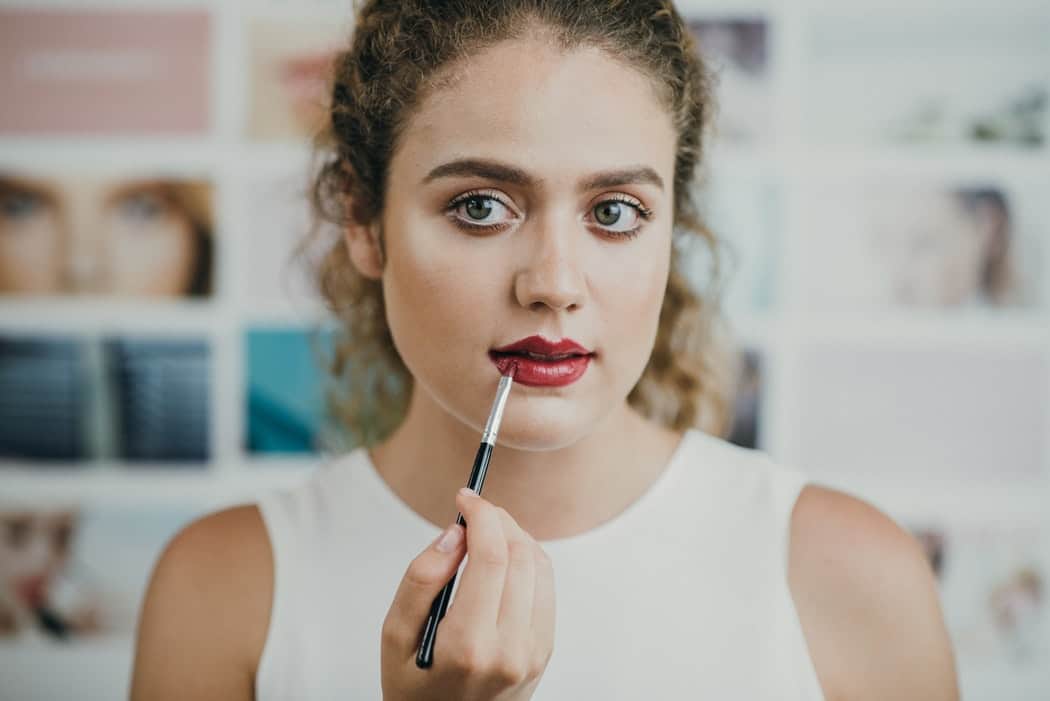
Benzones
(Avobenzone, Mexoryl, Oxybenzone, Benzophenone)
What it is: Chemical UV filter.
What it does: These cosmetic ingredients help to block UV rays. Benzophenone prevents ultraviolet (UV) light from damaging scents and colors in products such as perfumes and soaps
Where you’ll find it: Sunblock, foundations, anything with sunscreen in it.
NOTEWORTHY: There is a huge controversy regarding chemical UV blockers such as those listed above. Through research, it has been noted that chemical blockers such as these, break down under sunlight and penetrate into the skin. They are known to cause allergic reactions in the skin, contact eczema and POSSIBLY cancer. (Though more research is being done.) The ingredients above have many synonyms, be sure to check the EWG website for all the synonyms, but here are some that are more common: BENZOYL, DIPHENYLMETHANONE, A-OXODITANE, PARSOL 1789, EUSOLEX 9020, ESCALOL 517
Alcohols
(Cetyl alcohol, Stearyl Alcohol, Ceteareth 20, Cetearyl Alcohol)
What it is: A fatty alcohol that acts as an emulsifier and emollient.
What it does: Mixes oil and water phases or vice versa. Also used as a lubricant. It allows the product to spread easily. That soft feeling you get after you condition your hair comes from this group of ingredients.
Where you’ll find it: Hair products, mainly conditioners and deep treatments.
NOTEWORTHY: This group of alcohols is not to be mixed with ethanol or propanol, which are “real” alcohol. Most of these are derived from palm oil or coconut oil, however in the past they were derived from sperm whales.
Isopropyls
(Isopropyl Isostearate, Isopropyl Palmitate)
What it is: A fatty acid that acts as an emollient and binder.
What it does: Lubricates and conditions the skin as well as holds all the ingredients together.
Where you’ll find it: Skincare, face and eye makeup, shampoo, deodorant, after shaves etc.
NOTEWORTHY: It is a relatively safe ingredient due to the low dosage in cosmetic products. It is used in most beauty products.
READ MORE: How to Disinfect Your Makeup Using One Household Ingredient
Glycerols
(Glyceryl Oleate, Glyceryl Stearate, Glyceryl Cocoate, Glyceryl Stearate SE)
What it is: An emulsifier and a humectant. It is sourced from animal or plant fats. It can also be manufactured synthetically.
What it does: Mixes oil and water phases, but most importantly is able to absorb and retain moisture in the skin.
Where you’ll find it: Moisturizers, hand creams, body creams, soaps etc.
NOTEWORTHY: Glycerols are a relatively safe ingredient that help the skin with dryness and flaking and because the composition is very similar to the natural skin it will help to protect its outer barrier. However, due to its moisture retaining ability, using 100% pure concentration of the ingredient on the skin will have the opposite result, as it will absorb water from the lower levels of the skin onto the outer levels which will then dissipate into the environment. (Glyceryl Cocoate is also a foaming and cleansing agent and Glyceryl Stearate SE gives a pearlizing effect to shampoos and lotions.)
It’s important to understand beauty product ingredidents, what they are, and what they are used for. Knowing which ingredients are beneficial and which are harmful can help inform decisions of which products to use. So, remember how important it is to read labels, research ingredients, and speak with a professional before using any cosmetic products. It’s also worth checking the FDA approved ingredients list as well. Armed with this knowledge, we can make safer and healthier decisions when it comes to using beauty products.
Sources: EWG Skin Deep Database, Cosmetics Info
CONNECT WITH DAILY MOM
💖 NEWSLETTER: DAILY READS IN YOUR INBOX 💖
Sign up to receive our picks for the best things to do, see and buy so you can relax and focus on more important tasks! Let us help you be the best version of yourself you can be!
BE SOCIAL WITH US
📌 LOVE IT? PIN IT!📌
